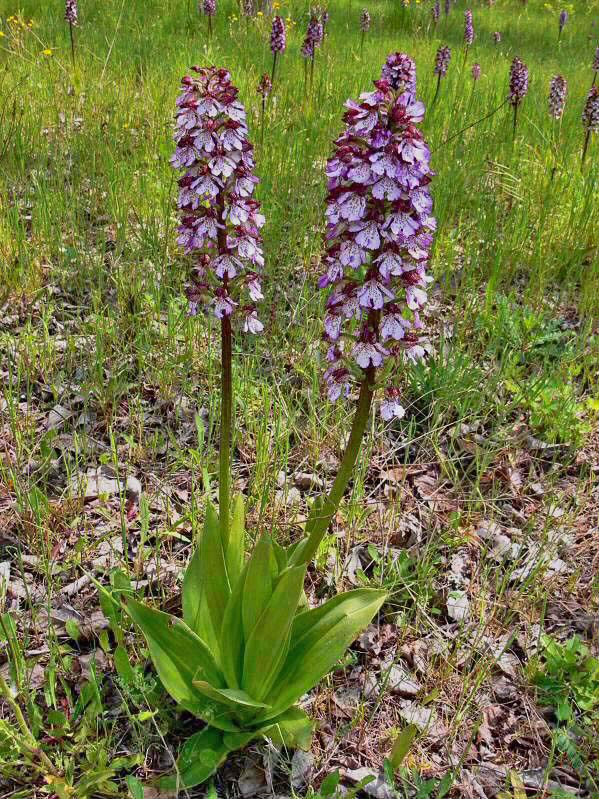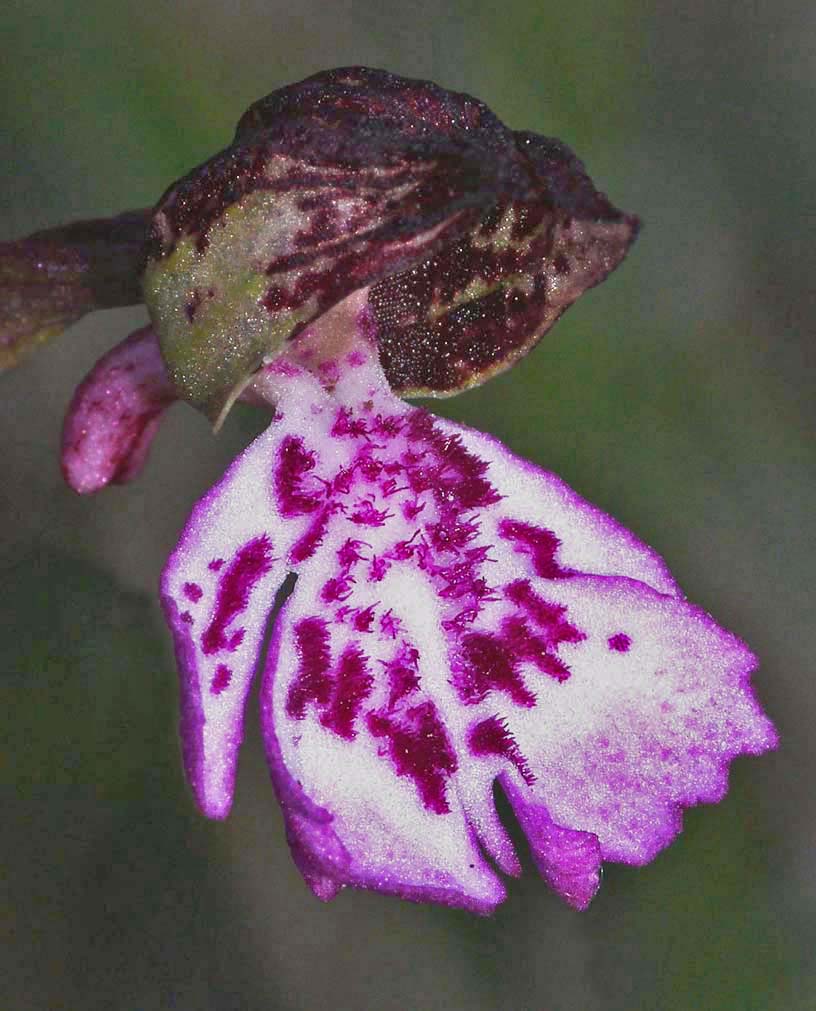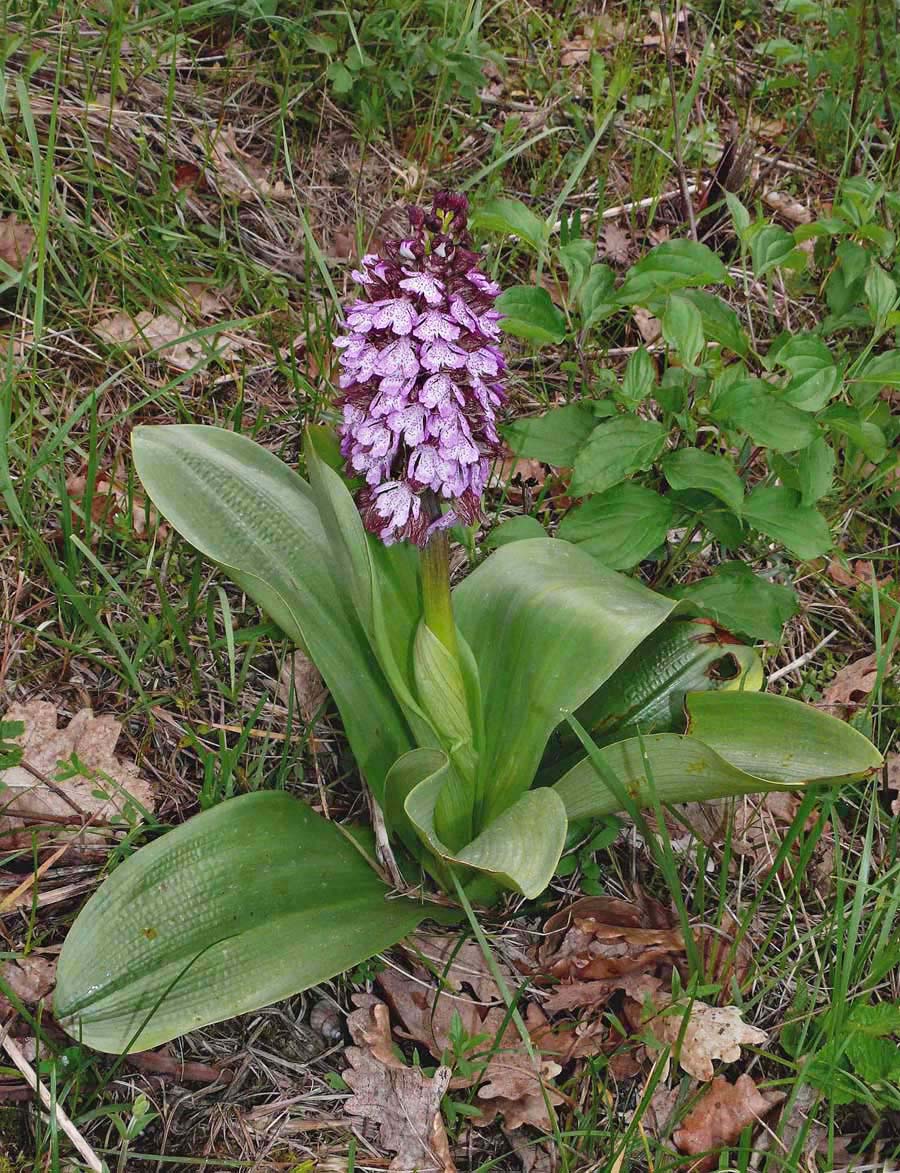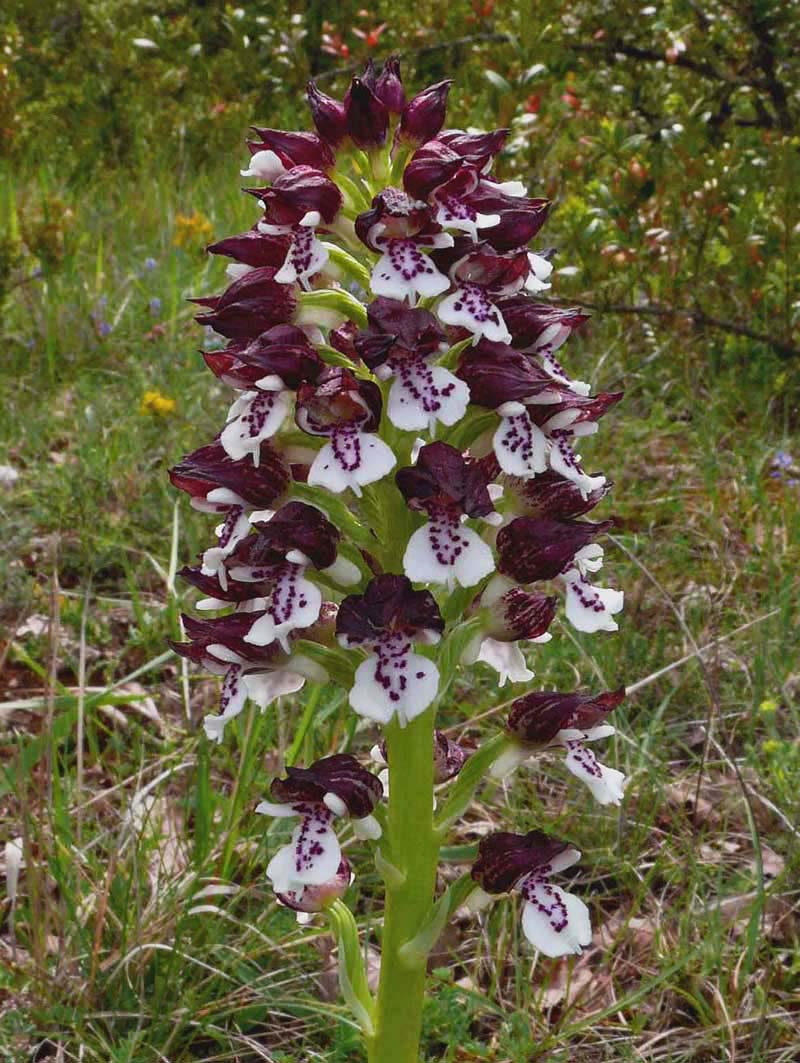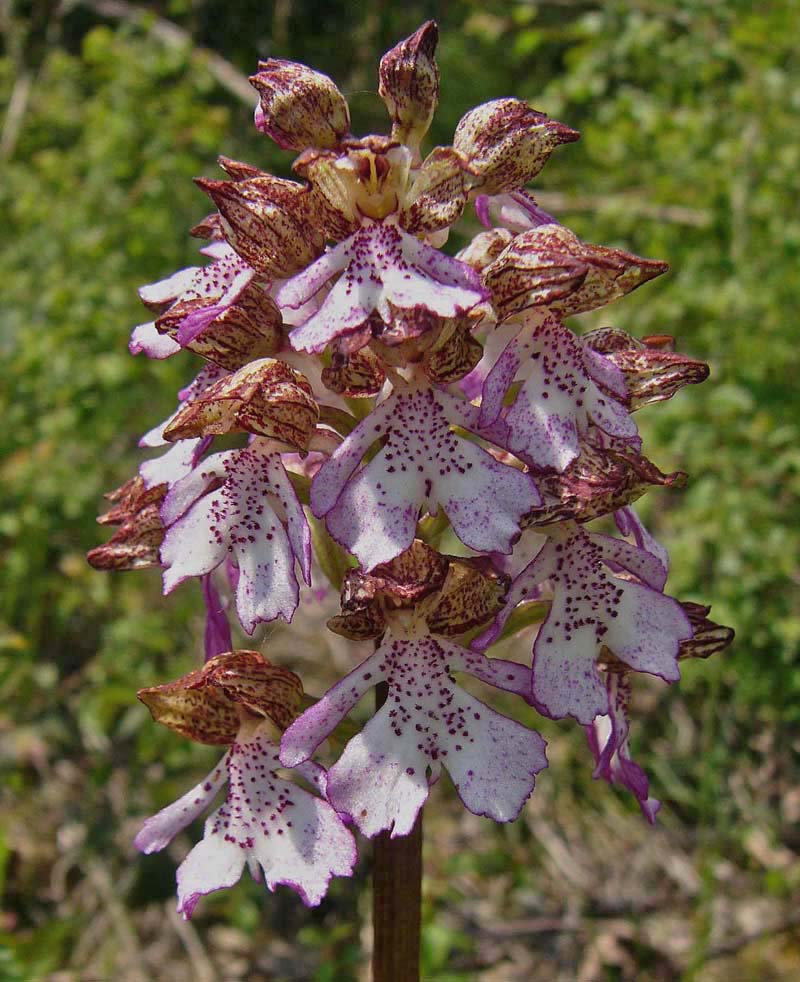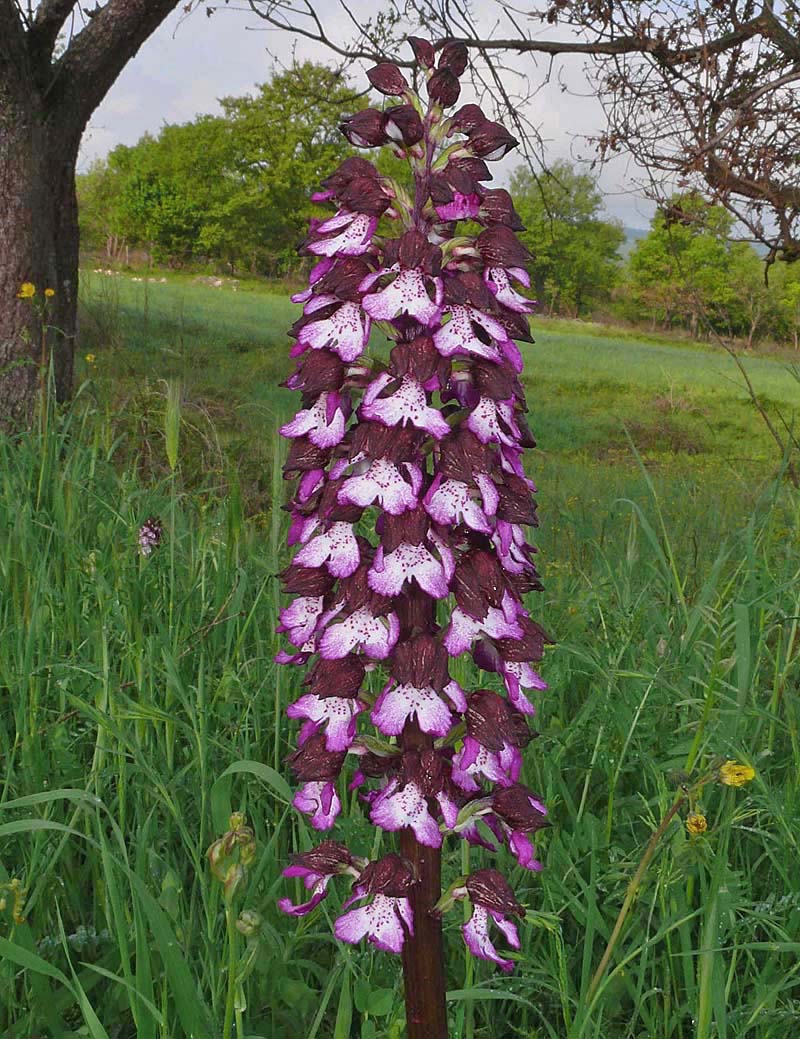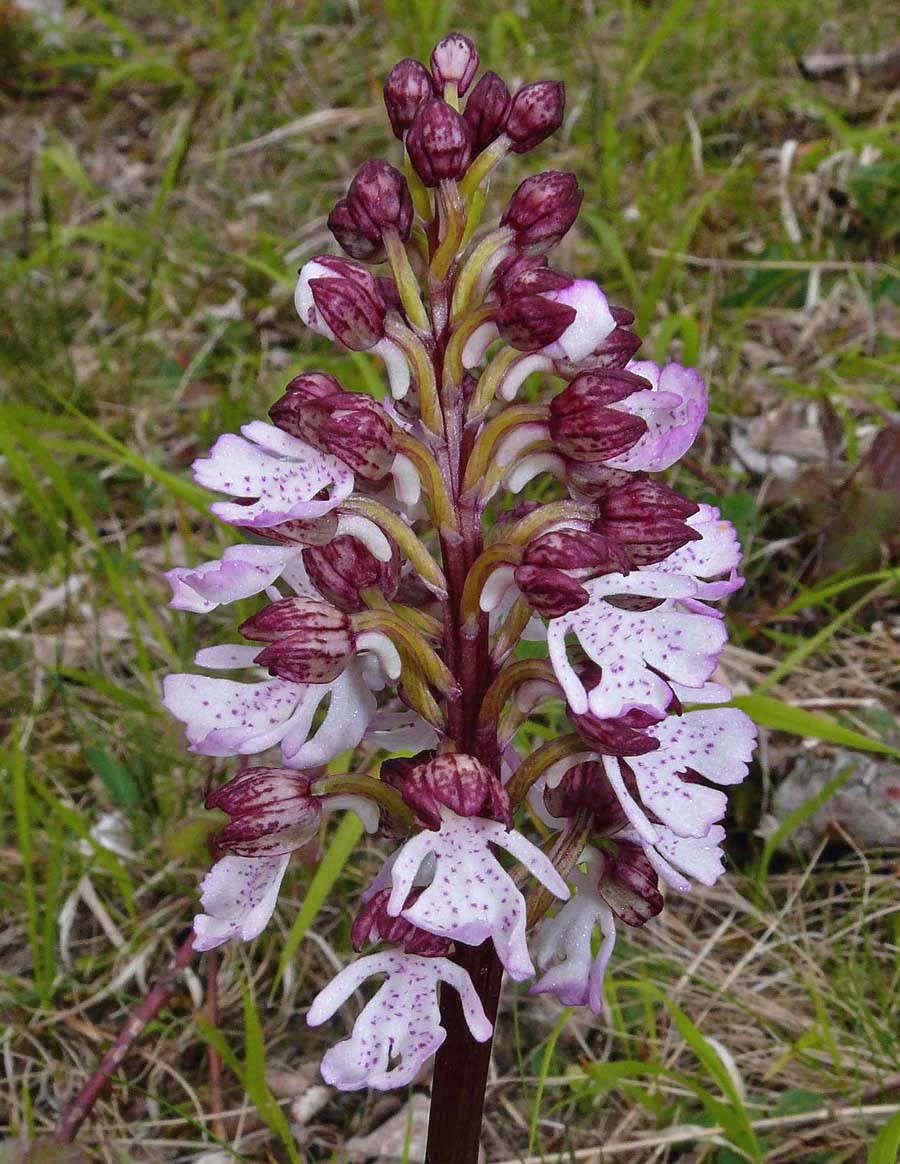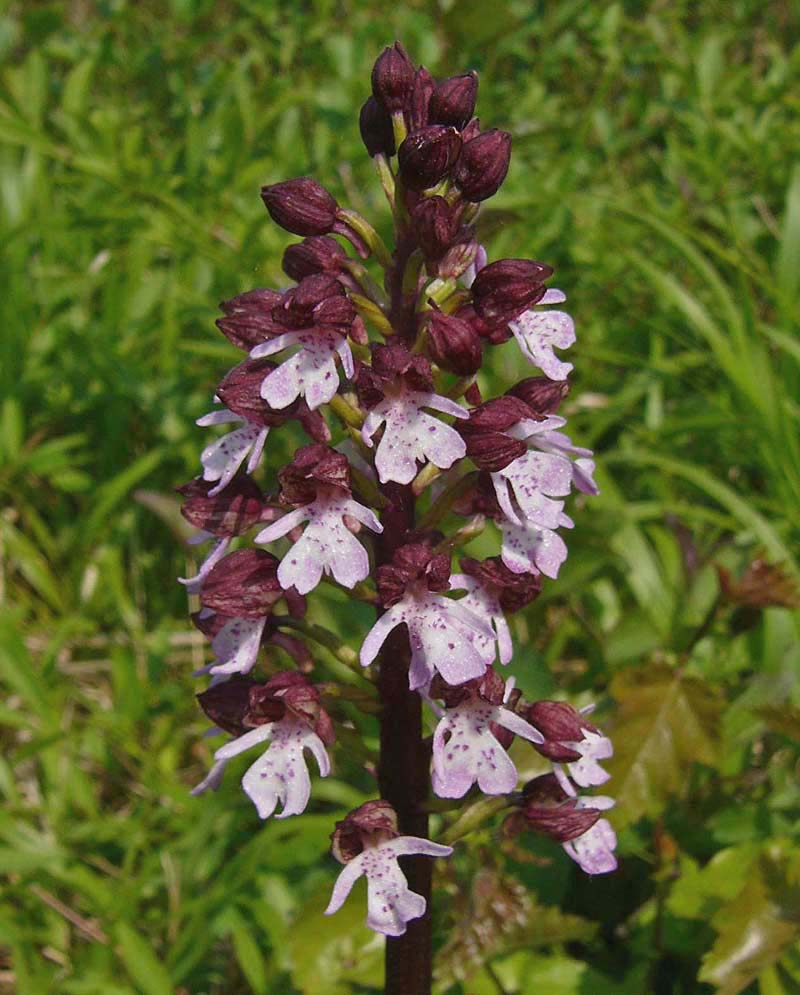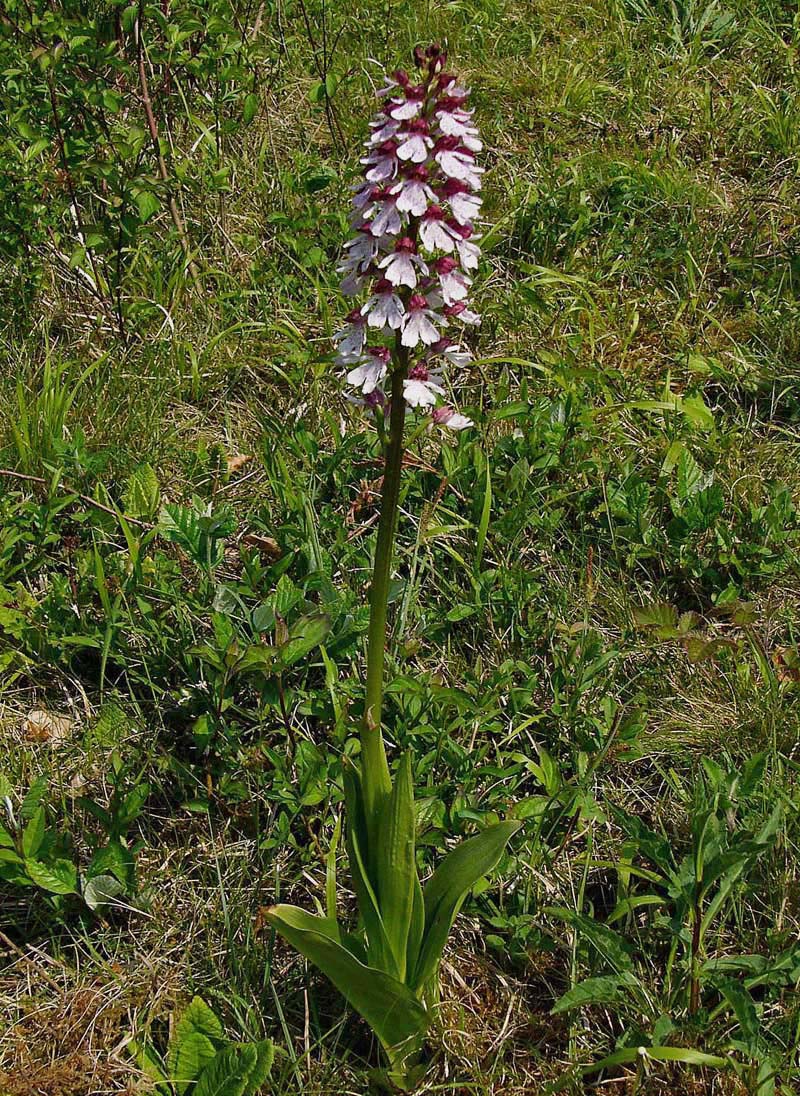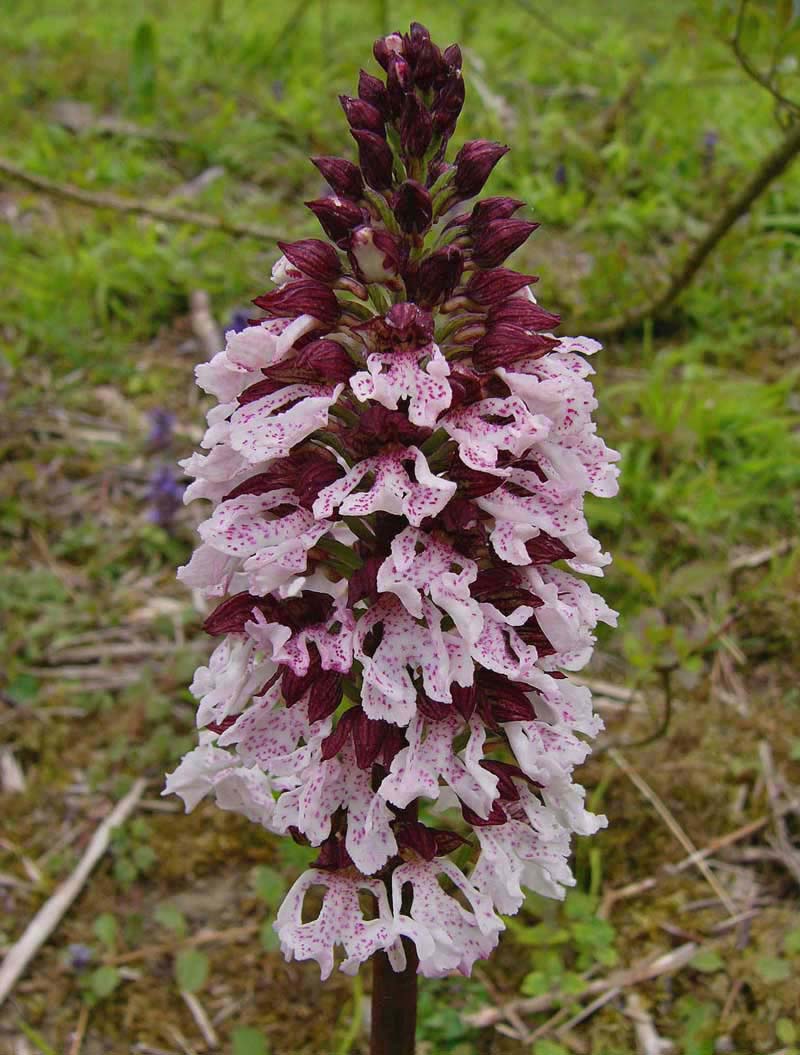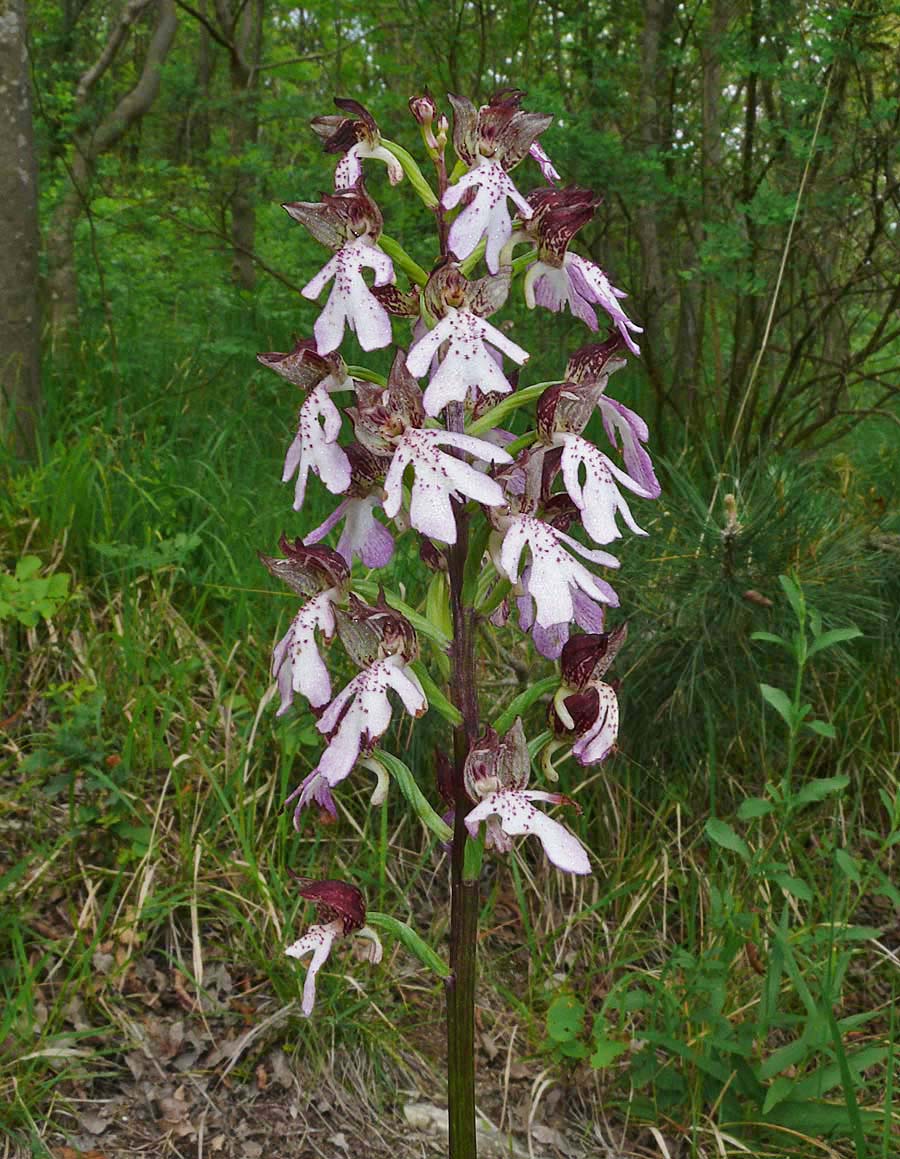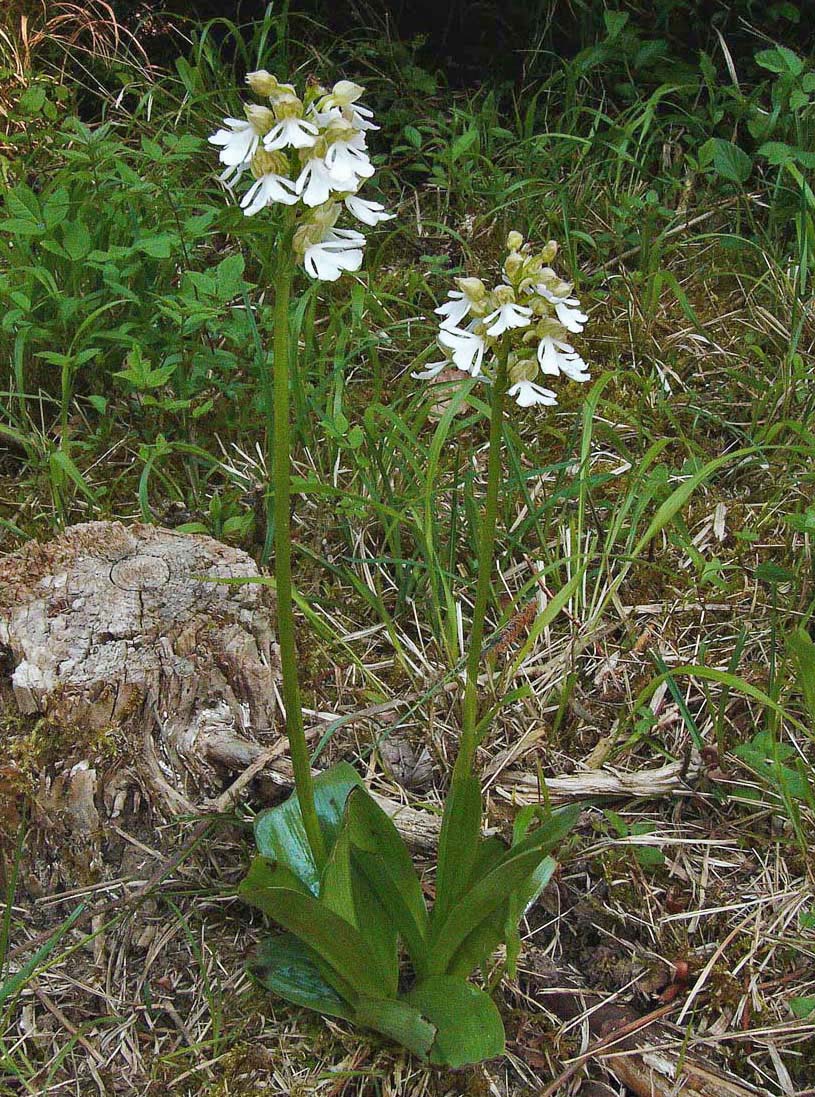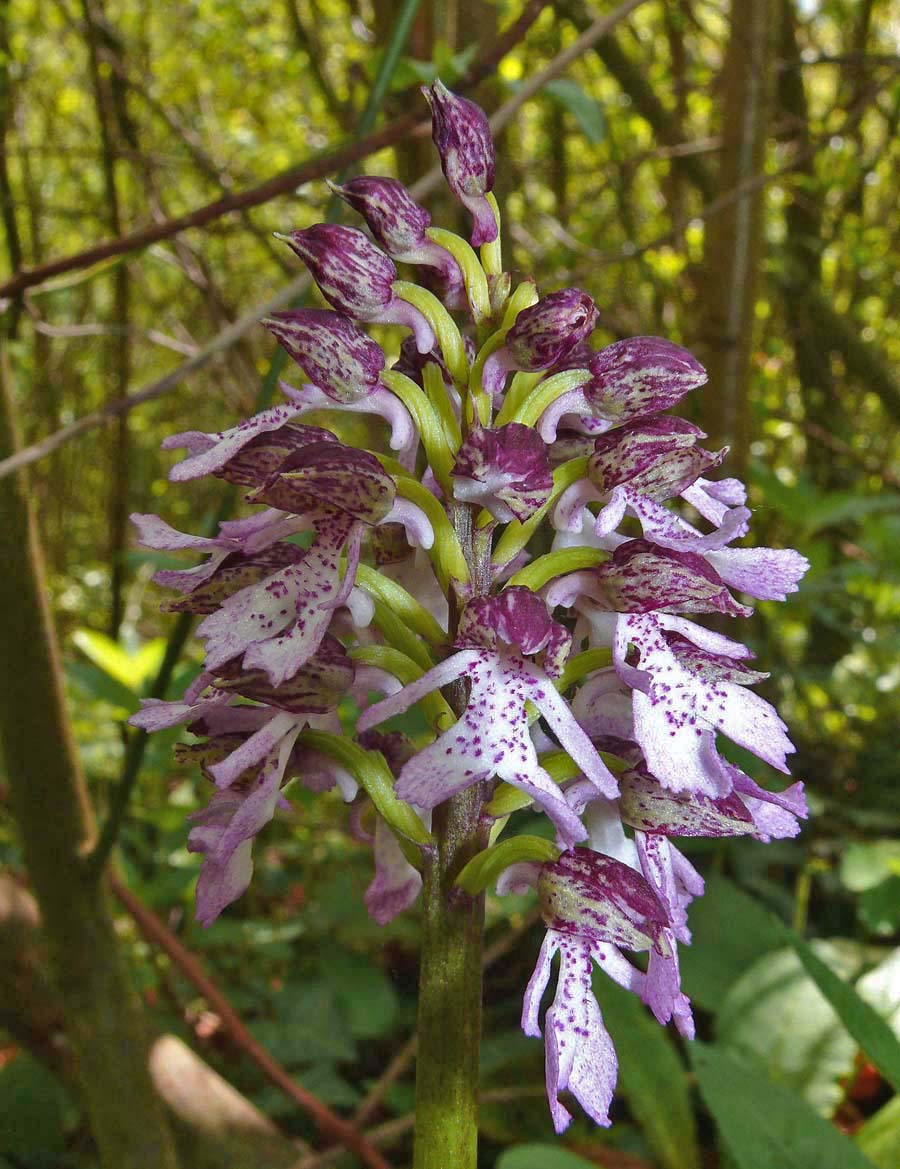O. purpurea was first described by Hudson from the county of Kent (England) in 1762 and its name refers
to the purple colouration of the
inflorescence. It has long been known commonly as the Lady Orchid, this
being a reference to the individual flowers resemblance to the flowing
skirts of the countrywomen of the time. It should be remembered however
that despite this feminine allusion, an appendage similar to that of O. anthropophra (the Man Orchid) is visible beneath the skirt !
This is one of Europe's commoner Orchis with a range extending from the south of England, across central and southern Europe into Russia. It can also be found in parts of north Africa. O. purpurea is one of the tallest and most robust of the continents orchids which in exceptional cases can reach nearly a metre in height and produce multiple stems from a massive rosette of broadly lanceolate, shiny leaves. It is also known to form huge colonies in its favoured locations.
O. purpurea is essentially a species that exhibits little significant variation in stature or form but lip patterns and colouration can differ, with the named variety albflora a frequently encountered example. This variety has an unmarked pure white lip with a light green hood that may be found throughout the range of the type species (see photo 12).
It is strictly a species of alkaline soils and favours a position in slightly shaded locations such as hedgerows, verges and light woodland. Hybridisation is common and particularly with the similar O. militaris with which it frequently occurs. Intermediates do however seem to appear in relative isolation and rarely form the swarms that can be common within the Serapias group.
This is one of Europe's commoner Orchis with a range extending from the south of England, across central and southern Europe into Russia. It can also be found in parts of north Africa. O. purpurea is one of the tallest and most robust of the continents orchids which in exceptional cases can reach nearly a metre in height and produce multiple stems from a massive rosette of broadly lanceolate, shiny leaves. It is also known to form huge colonies in its favoured locations.
O. purpurea is essentially a species that exhibits little significant variation in stature or form but lip patterns and colouration can differ, with the named variety albflora a frequently encountered example. This variety has an unmarked pure white lip with a light green hood that may be found throughout the range of the type species (see photo 12).
It is strictly a species of alkaline soils and favours a position in slightly shaded locations such as hedgerows, verges and light woodland. Hybridisation is common and particularly with the similar O. militaris with which it frequently occurs. Intermediates do however seem to appear in relative isolation and rarely form the swarms that can be common within the Serapias group.
